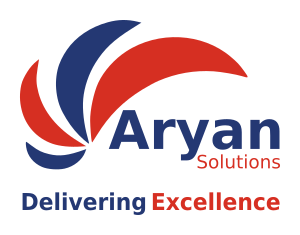
11.9% of employers struggle with tracking and managing applicants effectively.

Recruitment challenges are mounting as businesses receive an overwhelming number of job applications. HR managers are under immense pressure to filter, track, and engage candidates efficiently. A recent study found that 11.9% of employers struggle with tracking and managing applicants effectively, leading to lost talent, delayed hiring processes, and increased workload.
With companies competing for top talent, using outdated hiring methods only adds to HR stress. The solution? Technology-driven applicant tracking systems (ATS) that optimize the recruitment process, eliminate inefficiencies, and help businesses secure the right candidates faster.
Why Do Employers Struggle with Applicant Tracking?
Hiring processes have become more complex, requiring HR teams to juggle multiple tasks—from sourcing candidates to final onboarding. Without the right tools, tracking applications manually becomes a nightmare.
Top Reasons Employers Face Applicant Tracking Challenges
- High Volume of Applications: Sorting through thousands of resumes manually slows down hiring decisions.
- Inefficient Communication: Lack of coordination between HR teams, hiring managers, and candidates leads to delays.
- Scattered Candidate Data: Resumes, emails, and interview notes stored in different locations make tracking difficult.
- Compliance Risks: Poor record-keeping can lead to legal issues related to hiring practices.
- Limited Hiring Insights: Without data analytics, HR teams struggle to refine their hiring strategies.
With these challenges, it's clear why HR managers are under heavy stress. To keep up with hiring demands, businesses must embrace technology to streamline applicant tracking.
How an ATS Helps Employers Track and Manage Applicants Efficiently
An applicant tracking system (ATS) automates and organizes the hiring process, helping HR teams manage applications without stress. It eliminates manual errors, accelerates recruitment, and ensures compliance.
Key Benefits of Using an ATS
- Automated Resume Screening: Filters applications based on job requirements, saving time.
- Centralized Candidate Database: Stores all applicant details in one place for easy access.
- Improved Communication: Automates interview scheduling and updates candidates instantly.
- Faster Hiring Decisions: Provides real-time recruitment data to HR teams.
- Enhanced Candidate Experience: Keeps applicants engaged with timely feedback and status updates.
With an ATS, businesses reduce hiring delays and improve candidate quality, ultimately enhancing their overall recruitment success.
Choosing the Right ATS for Your Business
Not all applicant tracking systems are created equal. To ensure maximum efficiency, businesses must select an ATS that fits their hiring needs.
Features to Look for in an ATS
- AI-Powered Screening: Uses artificial intelligence to match resumes with job descriptions.
- Customizable Workflows: Adapts to different hiring processes and team structures.
- Seamless Integration: Connects with job boards, HR software, and collaboration tools.
- Mobile Access: Allows HR teams to manage hiring remotely.
- Automated Reports & Analytics: Provides insights to refine recruitment strategies.
Choosing the right ATS ensures a streamlined hiring process, reducing stress for HR managers and improving overall hiring efficiency.
Final Thoughts
With 11.9% of employers struggling with tracking and managing applicants effectively, businesses must act fast to avoid recruitment inefficiencies. An ATS not only reduces HR stress but also enhances hiring quality, speeds up decision-making, and improves the candidate experience.
By embracing technology, companies can transform their recruitment processes, gain a competitive edge, and secure top talent with ease.
Ready to optimize your hiring process? Invest in an ATS today and take the stress out of recruitment!
